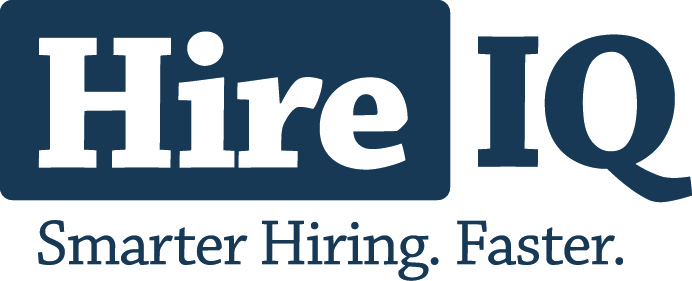Guest blog post from our friends at HireIQ.
While contact center technology has evolved significantly over the last thirty years or so, the practice of Workforce Optimization (WFO) has been around almost as long as contact centers have. However, as a holistic, integrated technology, it is a fairly recent innovation and it continues to evolve. Despite the technological advances, one element is constant: it often takes a human agent to deliver an exceptional customer experience.
The hiring process is often overlooked as a key step in implementing an effective WFO strategy. An agent’s relationship often begins many weeks prior to handling the first customer interaction and academic research has found that the candidate’s perception of the hiring process has a direct impact on his or her overall satisfaction with the company and his or her performance potential. Therefore, the hiring process and the new hire’s perception of it are just as important to a successful WFO strategy as the selection of the right technology.
Recruiting well-qualified agents is a tough job. With the headline unemployment rate at historic lows, recruiters have talked themselves into a desperate situation, believing there are few qualified candidates available. Couple this with the heightened expectations of the overall applicant population and filling open positions with high-performance talent is as difficult as its ever been.
The agent lifecycle approach exposes all aspects of an agent’s tenure: recruiting, hiring, training, and ongoing coaching so that all stakeholders work together to create a seamless and satisfying pre- and post-hire employee experience. The result is a more engaged, higher-performing, and longer tenured workforce.
The lifecycle strategy consists of three distinct phases: attract, select, and retain.
Attract
There’s an old adage that to be a successful fisherman, one needs to fish where the fish are. A company’s website careers page will capture active job seekers – those who know what they are looking for and where to look – as will the leading career sites such as Monster, CareerBuilder, Yahoo! Jobs, and the like. However, passive job seekers – those who wish to change jobs, but haven’t yet acted on the urge – will overlook these channels. To reach them, companies should look to a wide variety of social media outlets to generate interest. Facebook, with over one billion users at the time of this writing, is a good place to start. Companies that use a liberal mix of active and passive strategies will be rewarded with a healthy candidate pipeline.
Select
The first part of the selection process is to screen candidates for their ability to do handle the rigors of contact center work. This is normally done through a recruiter-led telephone screen in which a recruiter asks the agent candidate a series of questions that are designed not only to validate the candidate’s skills, but also to gain some perspective on his or her communication style, energy and personality which are critical success factors in customer-contact positions. It may also include a variety of skills, behavioral, cognitive, and personality assessments to see if the candidate will “fit in.” The selection step is also time-sensitive as many candidates will entertain competing offers if they feel the process is taking too long or they get no feedback on where they are in it.
Retain
This is where the worlds of recruiting and WFO effectively come together. Once hired, the new agent goes through a training program to prepare them for the rigors of contact center work. They not only learn policies, procedures, and operational systems, but they will also be exposed to the tools – some for the first time – that will be used to ensure their compliance and measure their performance. They will be introduced to the interaction recording, scheduling, performance, and feedback systems the company has in place to help them achieve optimum productivity over their tenure.
Companies that integrate WFO results with their recruiting process will recognize top performers and identify the characteristics they exhibited before they were hired in an effort to select subsequent hires with the same potential. This “closed loop” hiring process effectively raises the bar for future hires and improves contact center performance over time. Knowing the factors that drive exceptional performance and tenure allows the organization to develop diagnostics in the hiring process to improve candidate selection. The result is a higher-performing, organization, improved customer satisfaction and retention, and increased employee engagement and retention.
About the author:
Kevin Hegebarth is Vice President of Marketing and Product Management for HireIQ Solutions, Inc. He has over 30 years experience providing software and technology solutions designed to improve the recruiting, hiring, performance, and quality of customer service professionals. He has held executive marketing, product management and business development leadership roles with leading companies serving the customer contact market.
Kevin is a frequent contributor to industry publications and has spoken at numerous industry events on topics such as workforce acquisition and optimization, the role of social media in recruiting and customer service, and innovative human capital management strategies. He is also one of ICMI’s Top 50 Thought Leaders for 2015.
Follow Kevin on twitter: @kghegebarth or reach out to him directly at kevin.hegebarth@hireiqinc.com




